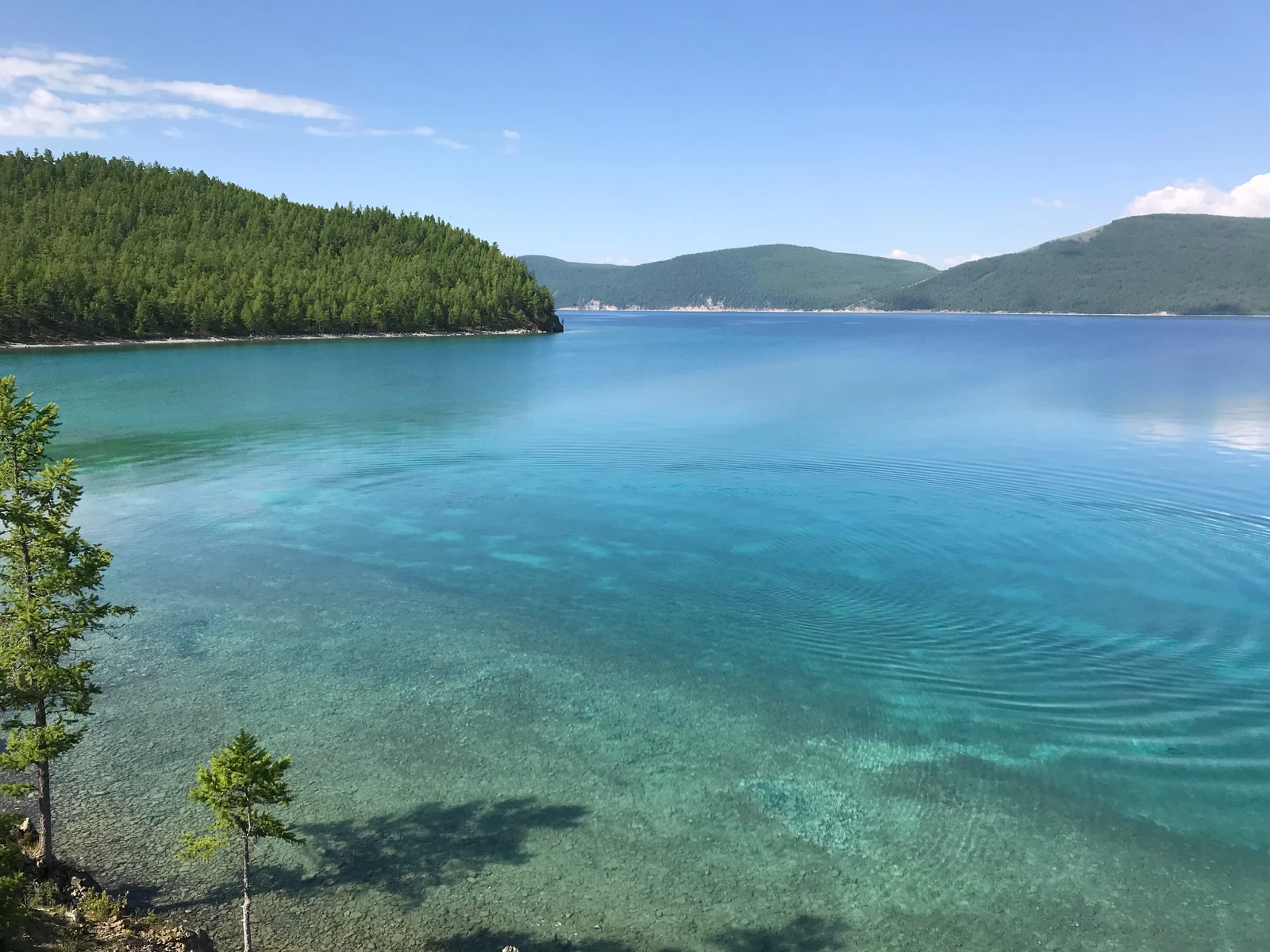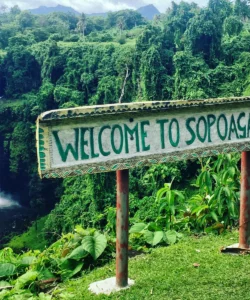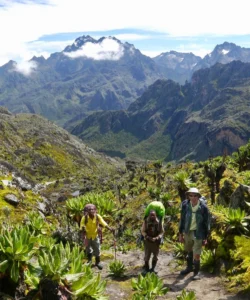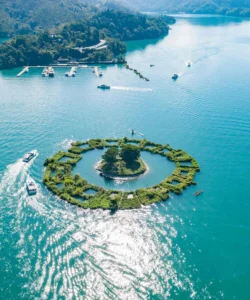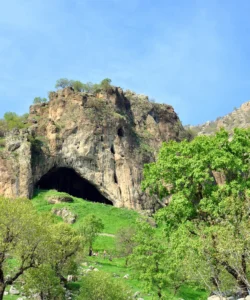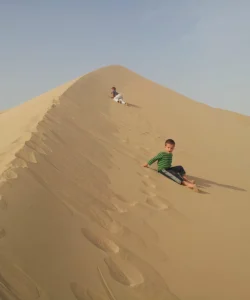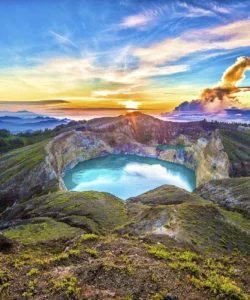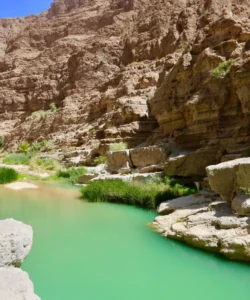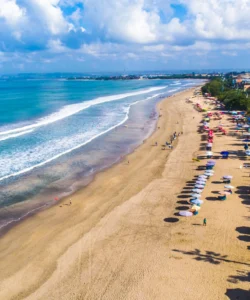Lake Khövsgöl, often referred to as “Mother Sea” or the “Dark Blue Pearl of Mongolia,” is the largest freshwater lake in Mongolia by volume and the second largest by surface area. Nestled in the heart of northern Mongolia, close to the Siberian border, this ancient rift lake is renowned for its exceptional purity, stunning alpine scenery, and cultural significance.
![]()
Name: Lake Khövsgöl (Mongolian: Хөвсгөл нуур, Khövsgöl nuur; also spelled Khuvsgul, Hovsgol, Huvsgul Nuur)
Address: Khövsgöl Province, Northern Mongolia. The main access town is Hatgal, located at the southern tip of the lake.
How to get there:
Reaching Lake Khövsgöl requires a journey, but the reward is immense:
- Fly to Mörön: The most common approach is to fly from Ulaanbaatar (Mongolia’s capital) to Mörön (the capital of Khövsgöl Province). Domestic flights take about 1.5 to 2 hours.
- From Mörön to Hatgal: From Mörön, it’s about a 100-kilometer (62-mile) drive to Hatgal. You can arrange for a shared minibus, taxi, or pre-booked transfer through your tour operator or ger camp. The road is mostly unpaved but generally manageable.
- Overland from Ulaanbaatar: For a more adventurous and immersive experience, you can arrange a multi-day overland tour from Ulaanbaatar by 4×4 vehicle. This allows you to see more of the Mongolian countryside, but the journey can take 1-2 days each way.
- Rental Car: While possible, renting a car and driving yourself is generally not recommended for foreign visitors unless you have significant experience with Mongolian road conditions and navigation in remote areas.
Landscape and Architecture:
Lake Khövsgöl is a natural marvel, set amidst a dramatic and pristine landscape:
- Crystal-Clear Waters: The lake is famous for its exceptionally clear, deep blue waters, with visibility depths often exceeding 18-24 meters. It’s so pure that its water is potable without treatment, holding about 70% of Mongolia’s fresh water and 0.4% of the world’s total.
- Surrounding Mountains: The lake is framed by the majestic Khövsgöl Mountains (part of the Sayan mountain range system), with jagged peaks reaching almost 3,000 meters (9,800 feet). These mountains are covered in dense taiga forests, primarily Siberian larch, pine, and birch, especially on the northern and western sides.
- Rift Valley Formation: Lake Khövsgöl is an ancient rift lake, formed about 7 million years ago, making it part of the Baikal Rift System and often called the “younger sister” of Lake Baikal. This geological origin contributes to its impressive depth (maximum 267 meters, mean 138 meters).
- Islands: The lake features a few small islands, which are often targets for boat trips and offer additional opportunities for wildlife spotting.
- Nomadic Settlements: While there are no grand architectural structures in the Western sense, the landscape is dotted with the circular, felt ger (yurt) camps of nomadic herders and tourist camps. These portable dwellings are an integral part of the cultural landscape, perfectly adapted to the environment.
- Hatgal Village: The small town of Hatgal at the southern end serves as the main entry point and has a more developed shoreline with guesthouses, small shops, and piers.
What makes it famous:
Lake Khövsgöl is famous for:
- Pristine Freshwater: It’s one of the oldest and most pristine freshwater lakes in the world, holding a significant portion of the planet’s drinkable water.
- “Blue Pearl of Mongolia”: Its stunning deep blue color and clear waters have earned it this poetic nickname.
- Spiritual Significance: The lake holds immense spiritual significance for the local nomadic communities, who often refer to it as “Mother Sea” and consider its waters sacred.
- Connection to Lake Baikal: Its geological link to the larger and deeper Lake Baikal in Siberia (via the Eg River, Selenge River, and ultimately into Baikal) is a fascinating geographical and ecological connection.
- Biodiversity: The surrounding Khövsgöl National Park is a protected area that supports a rich diversity of wildlife, including various fish species (some endemic like the Khövsgöl grayling), ibex, argali, elk, wolf, wolverine, musk deer, brown bear, Siberian moose, and sable. It’s also an Important Bird Area.
- Outdoor Adventure: It’s a prime destination for outdoor activities such as horseback riding, trekking, kayaking, fishing, and even ice festivals in winter when the lake freezes solid enough for vehicles to cross.
Differences from some other wonders:
Lake Khövsgöl offers a unique experience compared to other “wonders” in several key ways:
- Purity and Pristineness: While other lakes might be beautiful or large (e.g., Lake Superior, Great Lakes), Khövsgöl stands out for its exceptional water purity and status as one of the world’s most pristine ancient lakes. Its drinkable water without treatment is a rare quality for such a large body of water.
- Alpine Taiga meets Steppe: Its location serves as a transition zone between the Central Asian steppe and the vast Siberian taiga forests, creating a unique ecological blend of landscapes and wildlife that is distinct from purely mountainous, forested, or steppe environments.
- Nomadic Cultural Immersion: While natural parks in other regions might offer trails or campgrounds, Lake Khövsgöl allows for a profound immersion into Mongolia’s traditional nomadic culture. Visitors can stay in active ger camps, ride horses with local herders, and experience a way of life deeply connected to the land.
- “Cold Wilderness” Lake: Unlike many popular lakes that are primarily summer recreational spots, Khövsgöl is a “cold wilderness” lake, experiencing harsh winters where it completely freezes over, transforming into an ice road and a venue for unique winter festivals.
- Remote and Untouched Feel: Despite increasing tourism, Lake Khövsgöl still retains a strong sense of remoteness and being relatively untouched compared to more heavily developed natural wonders globally. The journey to get there reinforces this feeling of escaping to a true wilderness.
Lake Khövsgöl is not just a beautiful lake; it’s a vital ecosystem, a spiritual sanctuary, and a gateway to understanding the enduring nomadic way of life in the heart of Central Asia.
